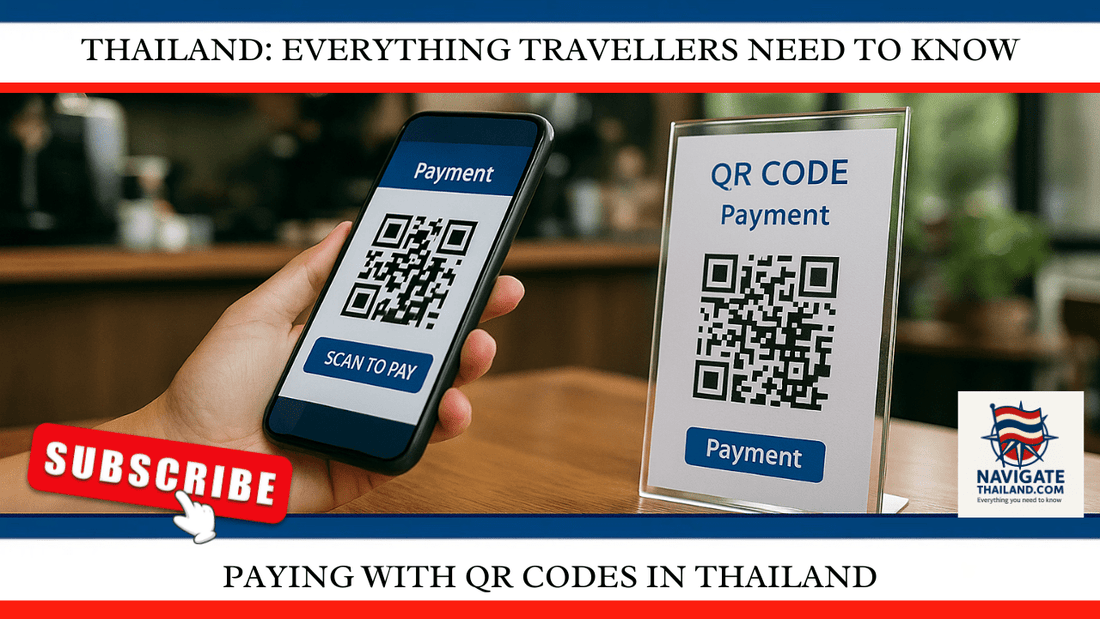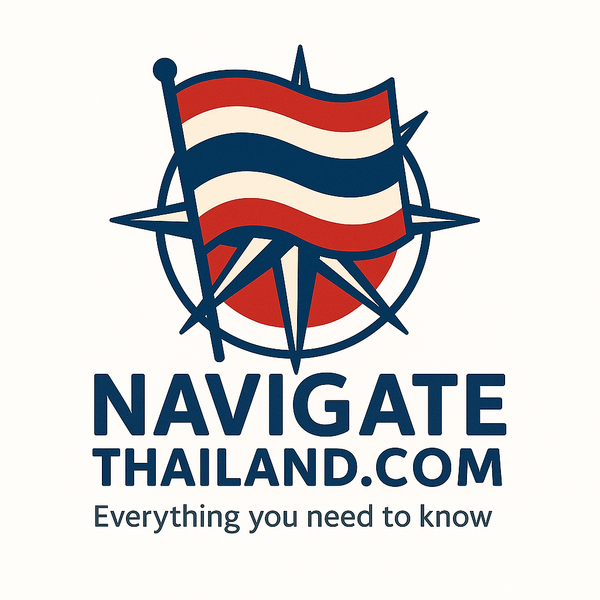
Paying with QR Codes in Thailand: A 2025 Guide to Cashless Travel
Share
From bustling Bangkok street stalls to quiet cafés in Chiang Mai, QR code payments have become the most common way to pay across Thailand. Whether you’re buying mango sticky rice, paying for a tuk tuk, or booking a hotel, chances are you’ll be asked to “scan and pay.” With mobile banking now more common than cash, travellers visiting Thailand in 2025 will find QR code payments not just convenient—but expected.
In this guide, we’ll explain how QR code payments work, why they’re so popular in Thailand, and how you can use them seamlessly during your trip.
The Rise of QR Code Payments in Thailand
Thailand’s digital payment boom began around 2016 with government initiatives to reduce cash dependency. The launch of the National e-Payment Master Plan and PromptPay changed everything.
By 2017, PromptPay, a nationwide payment platform by the Bank of Thailand, allowed people to send money instantly using just a phone number or ID. From there, QR code payments became the natural extension—offering a fast, cashless way to complete transactions using any smartphone.
By 2020, the COVID-19 pandemic dramatically accelerated adoption. With hygiene a top concern, contactless payments surged in popularity—and QR codes became a standard part of life.
How QR Code Payments Work in Thailand
Step 1: The vendor displays a QR code. This can be static (you enter the amount) or dynamic (the amount is pre-set). You’ll see QR codes printed on paper, on counters, or displayed on digital screens.
Step 2: You scan with your banking app or wallet. Open a mobile app like PromptPay, TrueMoney Wallet, Rabbit LINE Pay, or your bank’s app. Select the “scan QR code” function and point your phone at the code.
Step 3: You enter or confirm the amount. The app will prompt you to confirm payment, often with a PIN or facial recognition.
Step 4: The transaction is instant. Both you and the vendor receive confirmation, and the process is complete—no cash, no card, no waiting.
Why QR Code Payments Are So Popular in Thailand
QR code payments are now a cornerstone of daily life in Thailand. Here’s why they’ve taken off:
• Fast and convenient – Payments take just seconds and work from nearly any smartphone.
• Available almost everywhere – From major stores to night markets and taxis, everyone accepts them.
• Ideal for small businesses – Vendors don’t need card machines or costly equipment.
• Secure – Encrypted transactions and two-factor authentication make it a safe option.
• Low transaction costs – Lower than credit card fees, making it vendor-friendly.
• Government support – Strong backing from the Thai government and Bank of Thailand ensures continual expansion.
Fun Fact: In 2025, you can use QR codes for everything from ordering street food to paying utility bills or even donating to a monk at a temple ceremony.
Which Apps Can Tourists Use?
As a tourist in Thailand, you can still pay using QR codes—even without a local bank account.
• PromptPay – If you open a Thai bank account, most Thai banking apps include PromptPay.
• TrueMoney Wallet – Available for download and top-up using Thai SIM numbers or at 7-Eleven stores.
• Rabbit LINE Pay – Integrated into the LINE app, great for BTS Skytrain, cafés, and chain stores.
• GrabPay – If you’re already using the Grab app, you can scan QR codes and pay directly from your linked card or wallet balance.
• Cash top-ups – Tourist-friendly apps like TrueMoney can be topped up in cash at any 7-Eleven.
Pro tip: If you’re staying in Thailand longer, consider using Wise or Revolut to top up local wallets or link a virtual card to Grab or LINE Pay.
Pros of Using QR Code Payments in Thailand
• Fast, secure, and easy
• No need to carry large amounts of cash
• Widely accepted across all regions
• Safe for travel budgeting—track all your spending through your app
• Reduces risk of theft or scams tied to physical money
Things to Watch Out For
• You need a smartphone and internet access
• Double-check QR codes—don’t scan unknown or suspicious ones
• Some rural areas or older vendors may still prefer cash
• Tourists without Thai bank accounts may need to use TrueMoney or top-up wallets
The Future of QR Codes in Thailand
Thailand is one of Southeast Asia’s pioneers in digital payments. As of 2025, QR code payment systems are being integrated with international cross-border payments, particularly with countries like Malaysia, Singapore, and Indonesia. More vendors now accept foreign wallets, and you’ll soon be able to pay with your local QR code app from back home—no cash or SIM card needed.
Conclusion: Scan and Go with Confidence
QR code payments have transformed how Thailand does business—and for travellers, it makes life so much easier. Whether you’re hopping into a Grab, buying souvenirs in Chiang Mai, or tipping your masseuse in Krabi, just scan and go. It’s fast, reliable, and safer than carrying cash.
Embrace the ease of cashless travel in Thailand. Your smartphone is your wallet now—welcome to the future of travel in the Land of Smiles.
References
- Bank of Thailand – PromptPay and digital payment policy
- TrueMoney Thailand – truemoney.com
- Rabbit LINE Pay – line.me/th
- GrabPay Thailand – grab.com/th
- Bangkok Post (2025) – QR Code usage trends and policy changes
Read more of our Thailand blog series:
Thai Food Guide:Traditional Recipes and Street Eats
Everything Travellers Need to know
Thailand travel ebooks and language guides
Thailand Travel Apparel & Souvenir Gifts
Subscribe to our YouTube channel Navigate Thailand to see our most popular Thailand travel blogs turned into videos:
Navigate Thailand YouTube channel


















































































































































